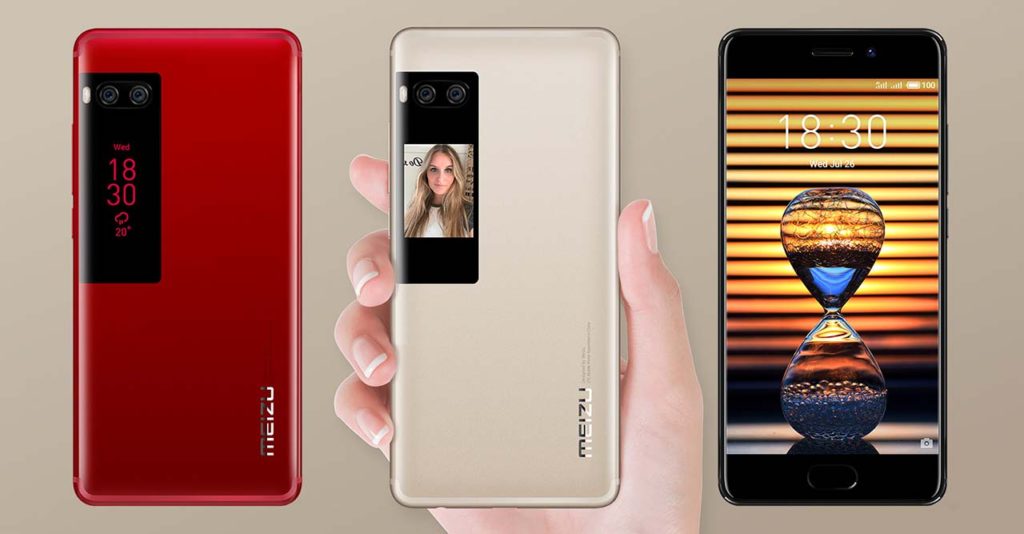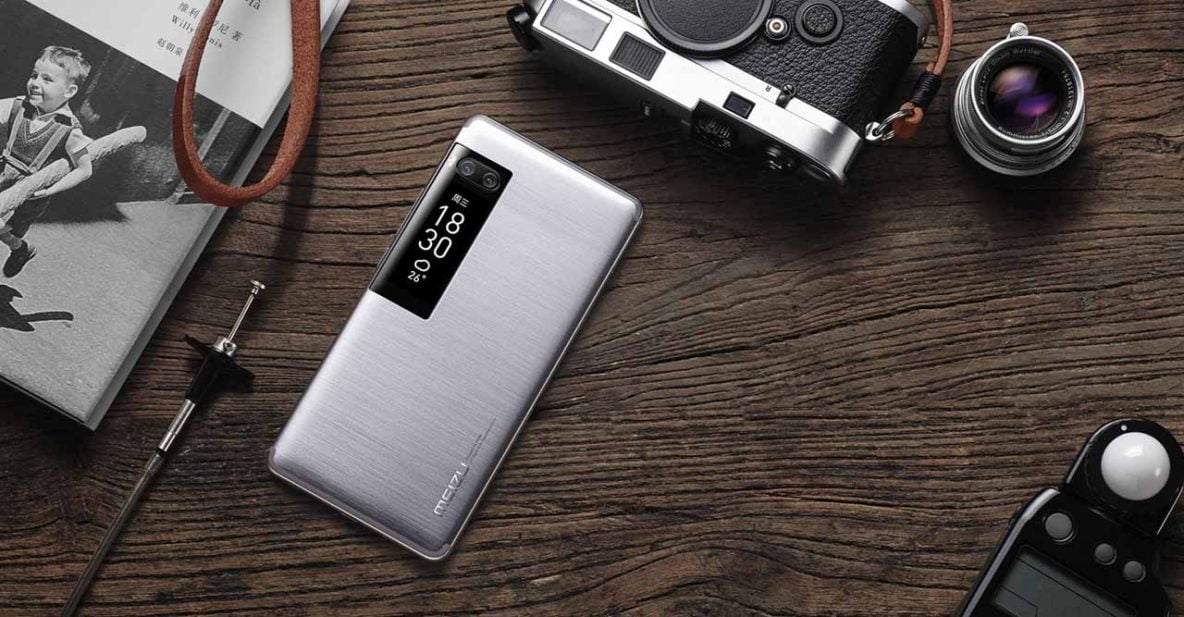It’s an unorthodox approach, for sure. But it’s one that is probably more attractive to people who just can’t look away from their smartphone screens regardless of the occasion, and one that could prove more useful if more functions are supported.
SEE ALSO: Meizu M5 vs. Meizu M5s: Budget-phone showdown
Developed in collaboration with internationally renowned design studio Frog, the Meizu Pro 7 and Pro 7 Plus are said to have been inspired by the idea that consumers want to stay connected all the time without feeling the need to check their social-media accounts so much. That sounds nice and all, until you realize a regular smartphone screen resides on the other side of the secondary display. The odds look better for a smartwatch, is what we’re saying.
The Meizu Pro 7 ‘at work’ 😉
Anyhow, the screen round the back measures 1.9 inches diagonally, and it uses AMOLED technology, which means it looks more vibrant while drawing less power when active than an LCD panel.
It lights up automatically when the phone is flipped on its face to display the time and weather information, as well as simple notifications. It can also be used to play music, or as a digital mirror for taking selfies with the rear-facing camera. The tiny display can’t be used to show messages or emails, though a future update will allow you to send quick and contextual responses.
READ ALSO: Cherry Mobile Taiji phone-slash-ebook reader now on sale
Both versions come in attractive metal bodies — in red even! — with a conventional headphone jack, which leaves the modern Type-C connector free for quick charging and file transfer. The main AMOLED screen on the Pro 7 is 5.2 inches, and has a 1080p resolution, while the Plus model steps up to 5.7 inches and a 1440p or quad-HD resolution.

The Meizu Pro 7 and Pro 7 Plus are also available in red.
The same set of cameras can be found on the Meizu Pro 7 phones, with the front-facing camera combining a 16-megapixel sensor with f/2.0 glass and the rear-facer packing a 12-megapixel, dual-lens system — one for capturing color and another for capturing monochromatic (read: black and white) images. That said, it would make sense to use the main camera for selfies, even if only to take advantage of the two-tone flash at the back.
As with other Meizu flagships, a special audio chip has been packed into the Pro 7 and Pro 7 Plus for better-quality sound. They also natively support high-res audio formats such as FLAC.
MediaTek chipsets power both phones, but the Plus earns the title as the first device to include a deca-core Helio X30 silicon, which is based on a 10nm processor like Qualcomm’s Snapdragon 835, and has faster CPU cores and a highly capable graphics hardware. The regular Pro 7 settles on an octa-core Helio P25 processor with 4GB of RAM and 64GB of storage (compared to the Plus’ 6GB RAM and up to 128GB storage).
MediaTek chipsets power both phones, but the Meizu Pro 7 Plus earns the title as the first device to include a deca-core Helio X30 chip.
In terms of battery capacity, the Meizu Pro 7 Plus unsurprisingly gets a larger 3,500mAh cell, whereas the Meizu Pro 7 has a 3,000mAh battery. It should be said, however, that the inclusion of an additional screen will make battery life worse, without even taking into consideration the hardware on the former. In other words, expect shorter usage times for the Plus variant.
The Meizu Pro 7 starts at 2,880 yuan (approximately P21,600 or $430), while the Pro 7 Plus with 6GB of RAM and 64GB of storage costs 3,580 yuan (P26,900 or $530). The cost goes up to 4,080 yuan (P30,600 or $600) for the 128GB model. Shipping starts August 5th, but only in China.
There’s no word on their availability in international markets, though a Meizu representative told us that the company plans to make the Pro 7 and Pro 7 Plus available in the Philippines toward the end of August.
A Meizu representative told us that the company plans to make the Pro 7 and Pro 7 Plus available in the Philippines toward the end of August.
Meizu Pro 7 and Pro 7 Plus official product video
Share this Post



